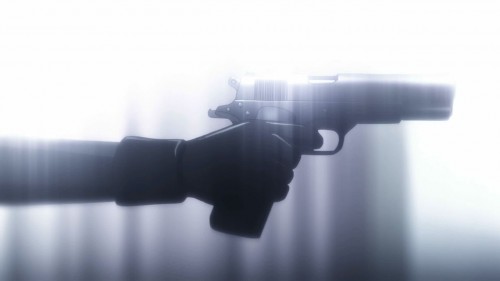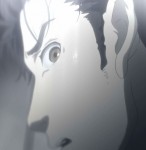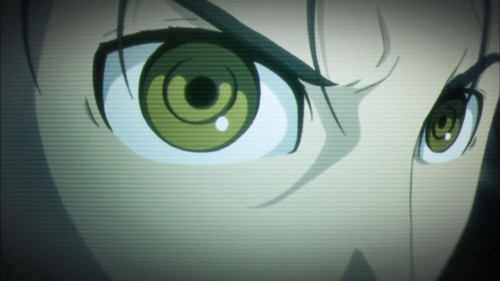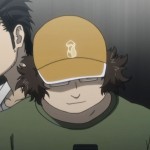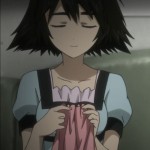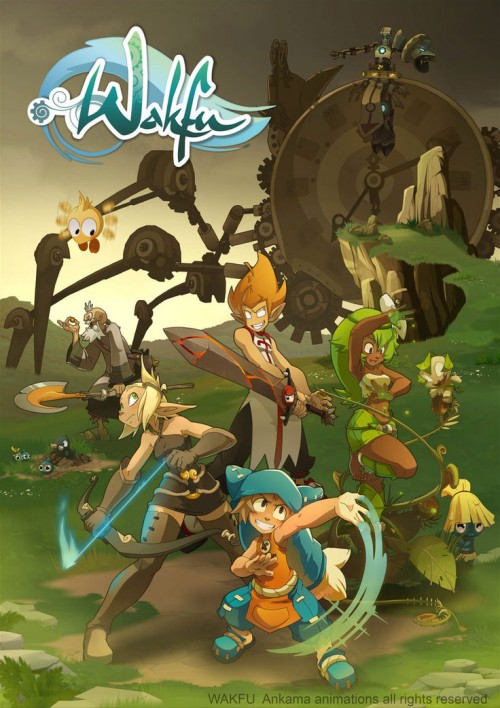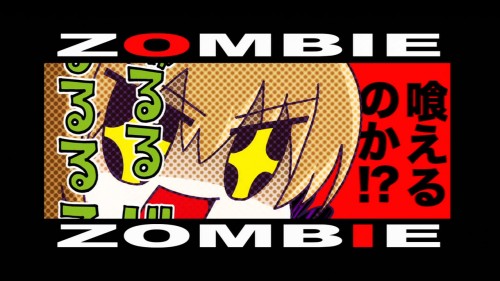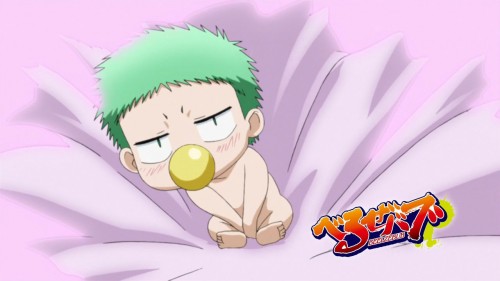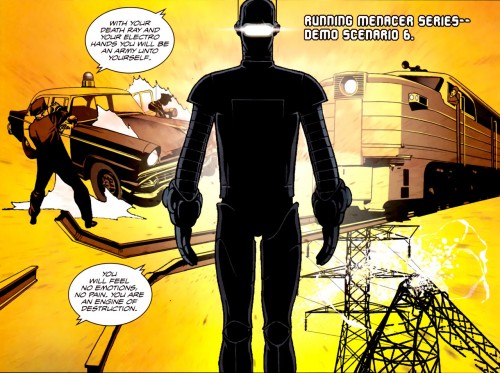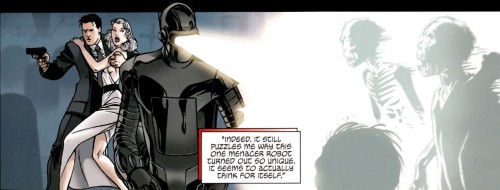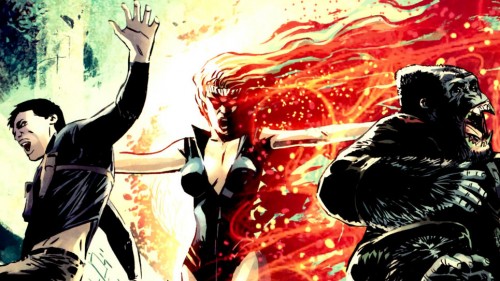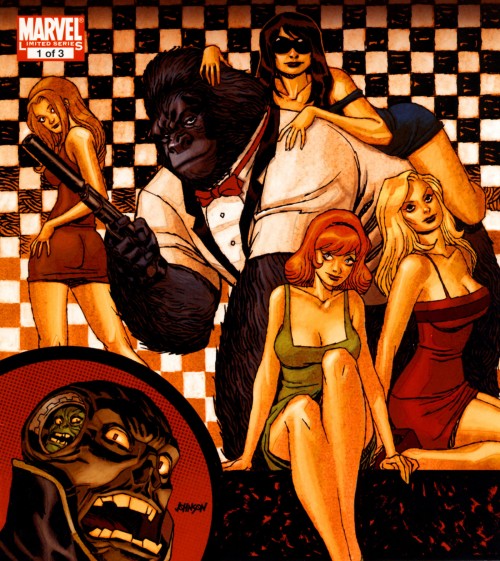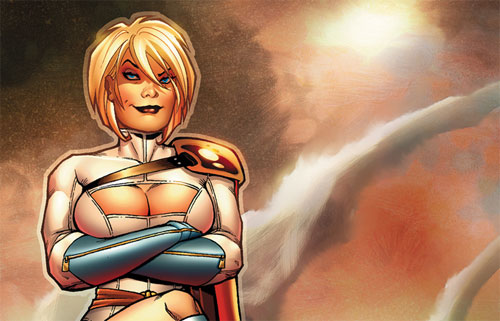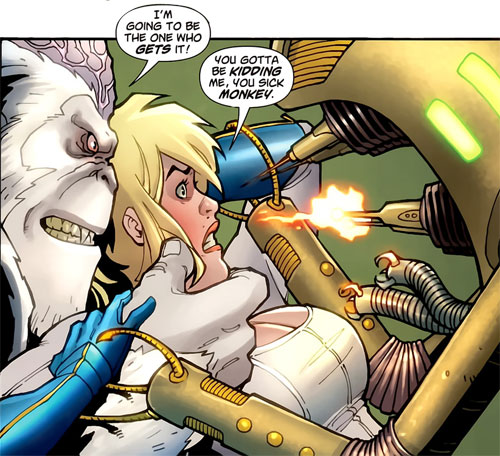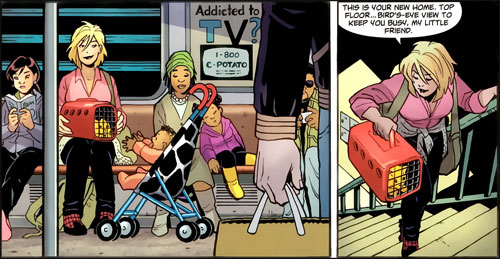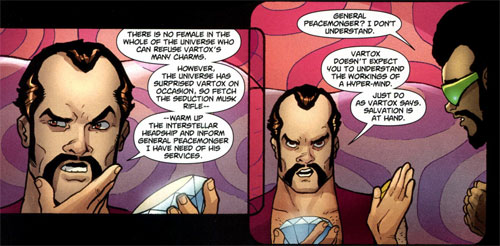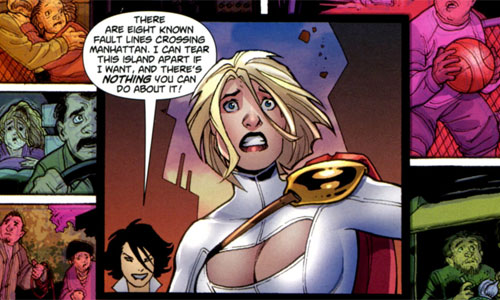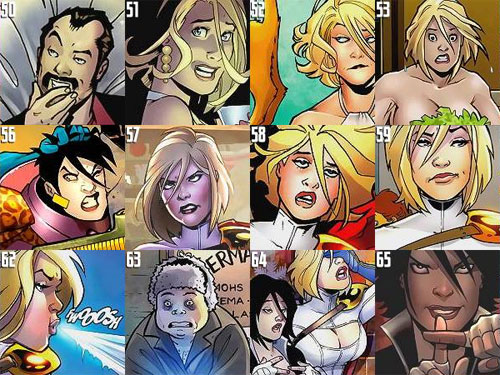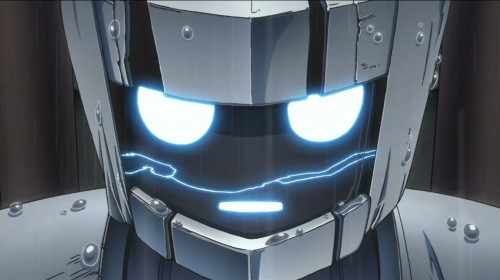
If there’s anything sillier than Japanese stereotypes about westerners (particularly Americans) in Japan, it’s Japanese stereotypes applied to westerners in their native environment. With a little assistance from the great Stan Lee, things hang together pretty well. Heroman is the tale of Joey Jones, adolescent loser, who finds a discarded robot toy that he patches back together. On the eve of a terrible alien invasion, the raggedy remote-control robot transforms into a hulking heroic figure, which Joey dubs “Heroman.” If you haven’t noticed yet, the names are awful. Awful even for a Stan Lee production.
The story takes place in an anonymous Californian city, so right away there need to be overcrowded freeways, skateboards, a beach, and black people. The main character is right out of Japanese love-triangle central casting, aside from the painfully-American name: he’s rather effeminate, shy, and unpopular. His main love interest is very baseball-and-apple pie in that she’s a blue-eyed, blonde cheerleader with an independent streak by the name of Lina Davis. Naturally she wears her cheerleader uniform everywhere. The small-time nemesis is her brother, all-American muscle-bound captain of the football team. He’s always wearing shorts and his jersey, a nod to the casual atmosphere expected of western schools. His henchman is short, overweight, and spoiled by wealthy parents. All very typical. Add in Joey’s buddy Psy (that really should read “Cy” as in “Cy Young,” but hey), an ambiguously-swarthy skater type with gigantic hair, and Professor Denton, the science instructor who accidentally brought the alien apocalypse down to Earth, and the cast is pretty much complete.
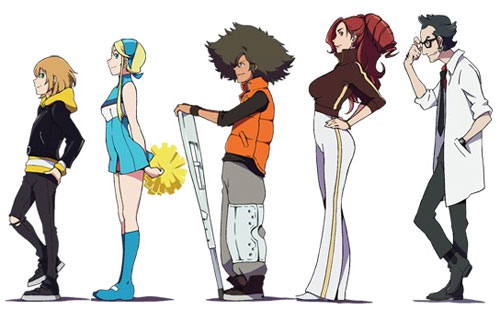
Heroman promises to offer some of the best and worst of two genres: heroic shonen anime and Marvel-style American comics. I specifically mention Marvel here, because there’s a certain flavor that Stan Lee is known for that shows up pretty well here. The classic distinction between DC superheroes like Superman, Wonder Woman, and Batman and Marvel superheroes like Spider-Man, The Incredible Hulk, and Iron Man is that while DC superheroes have superheroic problems, Marvel superheroes have mundane problems as well. Sure, Superman has to juggle his secret identity, but he doesn’t wrestle with that like Iron Man does with his drinking problem, or how Spider-Man struggles with his job and love life. Joey Jones has much more Peter Parker in him than Bruce Wayne. He’s a poor kid working a part-time job at a diner. He’s only got one friend at school is looked down on by his other classmates. He lives alone with his grandmother and pines over a photo of himself with his father.
Stan Lee doesn’t keep things entirely on the down-beat, though. In typical Japanese fashion, there’s a cute and popular girl that he likes, but in typical Stan Lee fashion she already quite clearly likes him. They take the obligatory romantic awkwardness of a made-for-Japan show and recast it. Joey’s not shy around Lina because he’s afraid she doesn’t like him. He’s shy around her because her big brother is going to kick is pathetic little loser ass. Basically Lina’s brother is to Joey what Flash was to Peter Parker. There’s nothing new under the sun, but that’s not a bad thing.
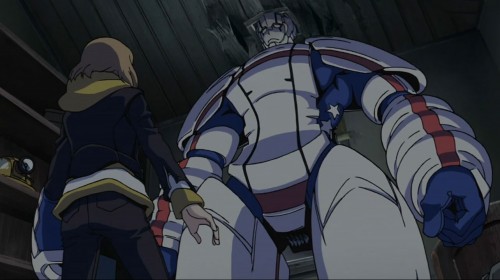
As for the superheroics, we get a toy robot that turns into a hulking armored robot that’s super-strong and brave and all those things Joey doesn’t think of himself as. Rather than piloting Heroman directly, or even having a remote control rig, Joey talks to it. The toy robot has a little remote control, but when Heroman transforms, it encases Joey’s hand and forearm, displaying an LCD interface. So far as I can tell, Joey doesn’t have a lot of direct influence over his superpowered buddy; a situation develops and an icon appears on the controller. Joey shouts something like “attack!” or “burst!” or “finish!” and slaps his free hand on the icon. Presumably he’s Heroman’s safety valve, or has an implicit veto authority.
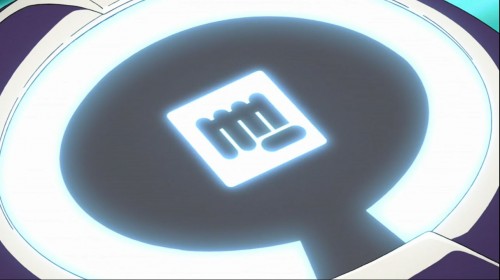
Each episode ends with charmingly cheesy “to be continued” cliffhanger. This is a good thing.
Spoilers follow.
Continue reading →
